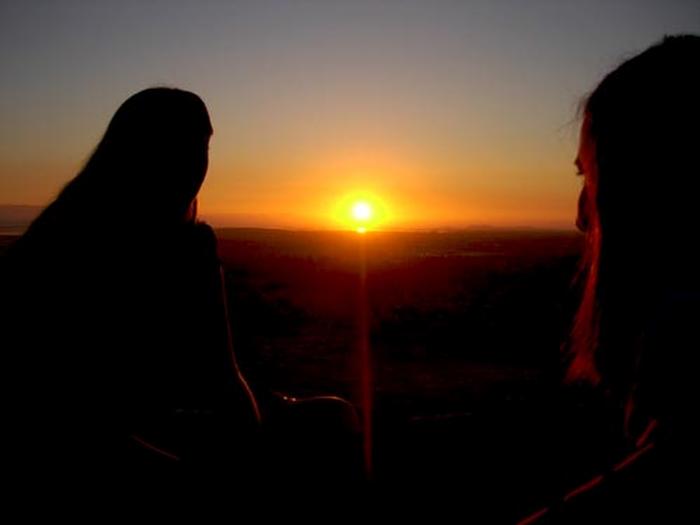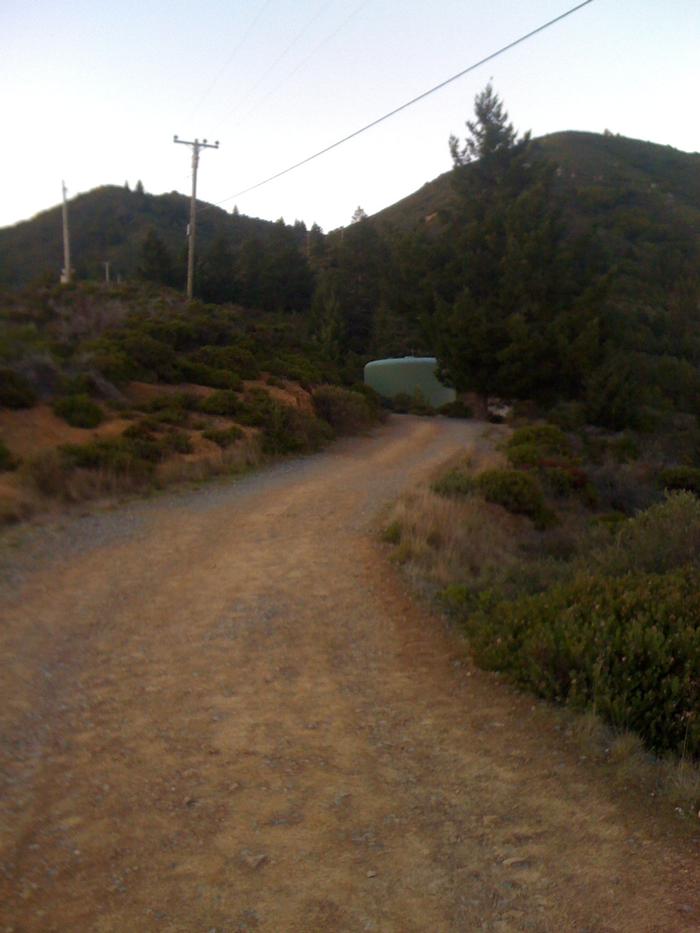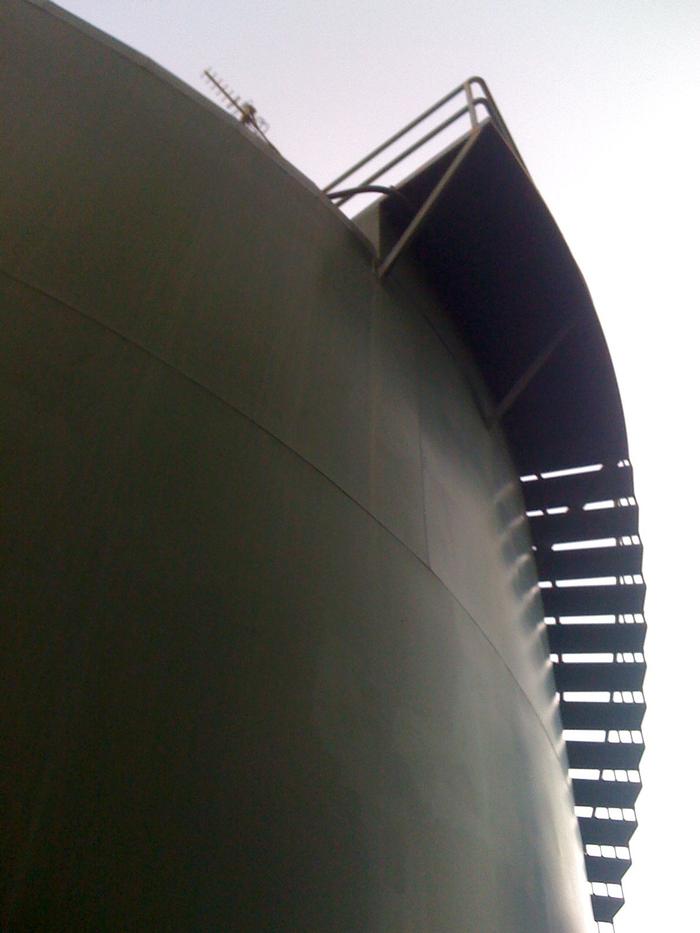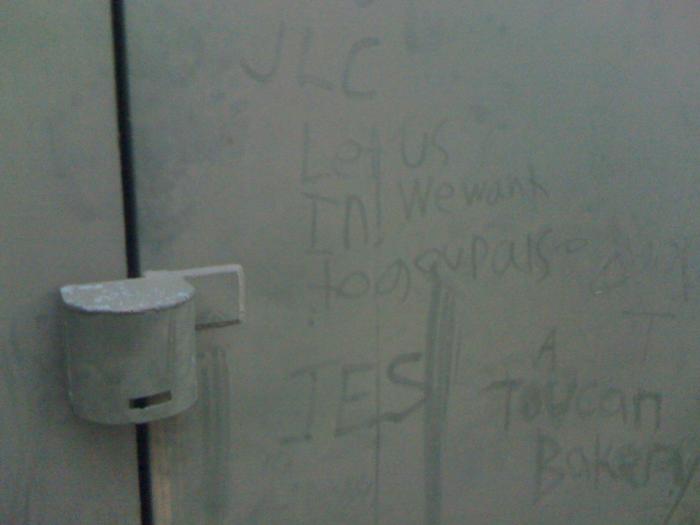[ID:181] A Water TempleUnited States At the end of a glorious summer during high school, all of us met at the Top of the World somewhere in Fremont, California. According to the Facebook group “You Know You’re From Fremont If…” the fourth way to tell is “you have been to the Top of the World.” We all know where the Top of the World is, and yet it cannot be found on any map. The Top of the World is elsewhere. There may even be many places called Top of the World. But it is always a place apart.
We had to discover the Top of the World for ourselves. We heard of it from older siblings, cooler friends and in that mythic suburban folklore everyone somehow knows. None of us had ever been there, so we drove through the residential streets and cul-de-sacs of Mission San Jose until we found it. There were so many of us friends in search of a good time, a picnic and the sunset that we took three cars. Each car found it in a different way, and it meant different things to each of us. We parked our parent’s cars on the side of the road, passed through a chain link fence, and followed a path until we came to the big round water tank facing an incredible view of the Bay. This spot was not especially far from the road, or even the suburban homes, but it felt different. There was no one watching us. There was a concrete slab to hoist ourselves upon, still warm with the heat of the day. Up there, we ran in circles and feasted on the golden rays of the setting sun. And I shouldn’t say “was” because it still is, and I’m sure future generations are enjoying the Top of the World wherever it is.
But the Top of the World is actually a mundane component of the East Bay Municipal Utility District. The Mediterranean climate and expanding populations motivated people to form municipal water districts across the state of California. These water districts manage vast territories and maintain thousands of miles of pipeline. For example, EBMUD manages more than 50,000 acres of watershed and serves more than 600,000 East Bay residents. The Marin Municipal Water District, with 9 reservoirs and 124 water tanks, controls 21,250 acres of watershed on Mount Tamalpais. Many of these Water Utilities purchased their water claims and land rights about a hundred years ago, and have continued to build pipelines, pumping stations and water tanks since then.
Water is a rarely appreciated resource, even in our semi-arid climate. Sometimes it is celebrated, as it is at the Sunol Water Temple, a neoclassical tholos near Fremont designed by Wilis Polk in 1910 and owned by the San Francisco Water District. A simple water tank is also actually a kind of modern water temple. These water tanks are everywhere, discoverable by anyone.
People use water tanks in many ways, not just as described before. Here in the Bay Area they are often an integral part of youth culture. In conversation with friends and family members, we discovered many similar water tank experiences among middle-class teenagers in hilly communities like Palo Alto, Fremont, Mill Valley and Novato. The variety of experiences reinforces the idea of the water tank as a sacred space.
A water tank may be private. In one case, my brother and his girlfriend needed to have a serious conversation. His first instinct: take a walk to a water tank halfway up Mt. Tamalpais. They hiked up the mountain, and when they came to the gravel site of the water tank they began their talk. He thought it was appropriate, as it was a thoughtful place with a view of their town spread below them. They stood by the cistern and made a careful assessment. They spoke freely. There he realized his need for change. Walking down the mountain together, but now separate, he thought on the transitions he would face. He recounts this experience as an important and poignant moment. A sad day on the mountain, but at the water tank he could see clearly his town and his own perspective.
Many people use the water tanks as a refuge, and it is unusual when that aura of privacy is broken. Yet when unexpected encounters occur, it is a neutral ground. One evening two friends of mine had walked up to a water tower to watch the sunset. They lingered into the darkness, playing with the gravel, throwing rocks against the cistern and listening to their reverberating pings. However, two more guys arrived, looking for a similar diversion and instead finding their spot occupied. Turns out these strangers went to the same school, but for whatever reason, none of them had spoken since grade school. In the darkness, they spent the evening in surprising companionship and conversation. The water tank was common ground.
Of the 124 water tanks in Marin, some stand as landmarks. I heard this story from a large group of friends that live in different towns. These friends would usually hang out in smaller groups on Friday nights. But on several occasions, they arranged to meet at the water tank. This took some coordination, arranging for rides from all over. But they all knew the place. The water tank was a natural place for them to gather.
While all these anecdotes explain different uses, they all rely on these specific qualities of the space at a water tank: ritual, a place apart, and a landmark.
Visiting a water tank involves a certain universal ritual. All the stories told to us shared these experiences, both in approaching the water tank and once there. Firstly, they find the spot and park. (These are suburban communities, after all.) From there, it is always a hike up to the water tank, following a sometimes winding, sometimes narrow path. Eventually they discover a cistern facing an especially beautiful view and stop to enjoy it. Everyone is tempted to climb the water tank, but some are easier to climb than others. The appearance of the tank doesn’t matter much, but most are big metal tanks over twenty feet in diameter and painted a shade of camouflage green. Some people figure how to climb up. However, most people encircle to entire water tank, bang against the metal, check out the graffiti and enjoy the view. To complete the ritual, they walk back to their car and reconnect with their daily lives.
Water tanks are built on the edges of suburban landscapes. Every water tank serves a purpose. The three we have discussed all are located in the hills above residential neighborhoods, utilizing the extra elevation to supply water to homes by gravity alone. The water tanks must be higher than the highest house they serve, often resulting in commanding views of the whole area. This is an essential part of the experience at a water tank. These water tanks are hidden uphill, but still nearby the homes they serve. This distance and perceived neglect allows the place to appear beyond surveillance and isolated. While allowing for illicit behavior, the water tank’s isolation also provides a place for quiet contemplation or important conversation. It is separated both physically and spiritually from the realm of everyday life.
As both man-made and out-of-scale in the landscape, water tanks act as distinct landmarks for local residents. They are monumental in comparison to the human scale. Water tanks are recognizable and even common in some California communities, but they are also rare enough to be exceptional. Since a water tank is so distinct, it can be used as a destination, meeting place or navigation tool.
Water Tanks are monumental landmarks, a place apart from the everyday, and sites for experiential ritual. These universal qualities combine to make the water tank a metaphorical temple despite its mundane infrastructural origins.
In some ways, the sacred space of a water tank may not be appropriate for an architectural intervention. Because of the somewhat illicit nature of hanging out at a water tank, any official memorializing act would destroy the sense of isolation, merely by acknowledging its existence. Official action could remove the fragile sense of an experience beyond the everyday, an essential quality in a sacred space. Our intervention should enhance the rituals already enacted there. Our interventions will play with the idea of illicitness and expand the ritual of visit a water tank.
The type of tank and its site will inform the interventions. Activities connected to view would not make sense for tanks in a copse of trees. Metal, wooden and concrete tanks all have distinct rituals associated with them, each requiring different tools and behaviors. Some interventions could work with any tank. Elements would be chosen from this proposed list to best serve the people who use a particular tank as a sacred space. Not every water tank would receive an intervention. Some of these are temporary. But all over these interventions are designed to accentuate sacred experiences at water tanks.
The following are practical, subtle interventions:
1. Work with the MMWD and EBMUD to attempt a policy change allowing moralizing and graffiti upon water tanks. At the very least, reducing the frequency that graffiti is painted over.
2. Create and distribute a map of the watershed, showing all water tanks and trails. Allows for increased use of sacred spaces.
The following are slightly illicit interventions:
1. Encourage graffiti to build up over time. Deposit spray cans to various tanks to kick start the process. For wooden tanks, begin with just one carving. Imagine- the water tank as a huge canvas to be painted on.
2. Distribute magnets across the surface of a metal tank to suspend various objects and images. Encourage the addition of objects by visitors to create an ever changing, impermanent canvas.
3. Find and Display Word Magnets for creating poems and stories.
4. Acquire aluminum ladders and place them in the bushes around tanks. The second someone sees them, the primal urge to climb the tanks will only be reinforced and enabled.
5. Paste a map to the sides of tanks to encourage discovery of other tanks within a reasonable distance.
6. Attach rubber mallets and drumsticks to the tanks with cables, to enhance drumming potential. Reliant upon the reverberating quality of the metal tanks.
7. Assemble Adirondack deckchairs on the top of tanks as a way to enhance the experience of the view.
8. Install a Condom dispensing machine.
9. Project a movie onto the side of a metal water tank, provide popcorn.
10. Host a live band playing on top of a water tank.
11. Organize a professional to paint a mural on a water tank.
12. Repaint a tank with chalkboard paint and provide chalk.
13. Stick glow and the dark stars all over the water tank’s surface.
While we realize that these suggestions are unconventional and may seem irreverent, they would actually enhance people’s connection with the place, creating lasting memories and reinforcing the space as sacred.
In America, suburbs epitomize the banal. They are repetitive and mundane. They homogenize and mass produce community. And they’re designed to be that way. It is the unintentional, un-designed spaces that individualize the suburbs. People have long appropriated water tanks for human use as sacred spaces. Water tanks are used for many sacred activities like celebratory gatherings, ritualistic visits, private contemplation, creating unexpected meaning in our daily lives.
If you would like to contact this author, please send a request to info@berkeleyprize.org. |




